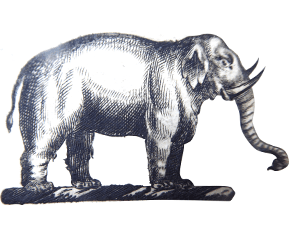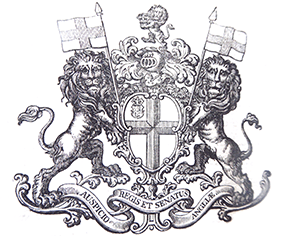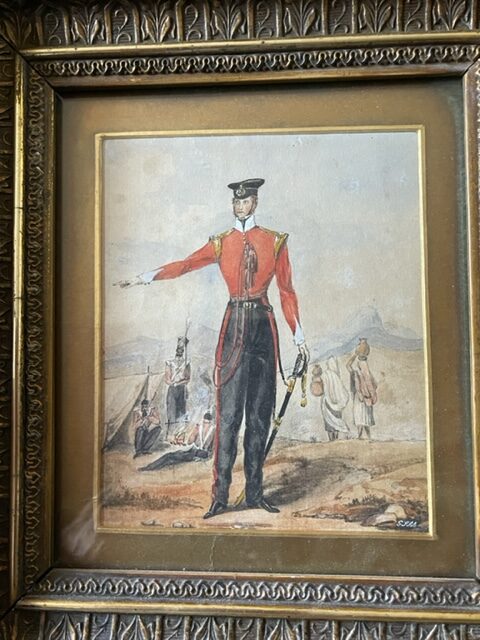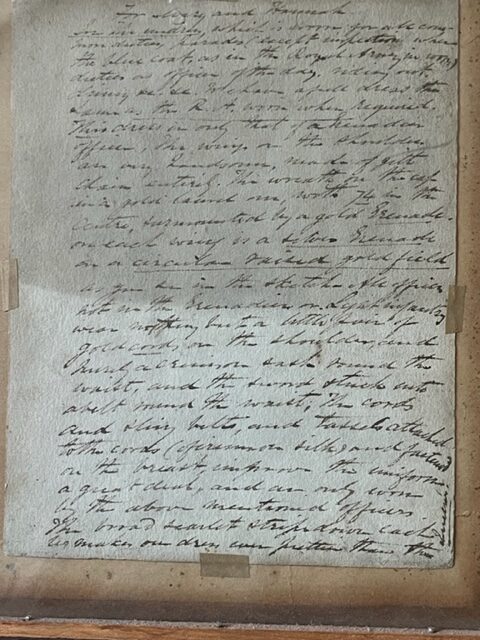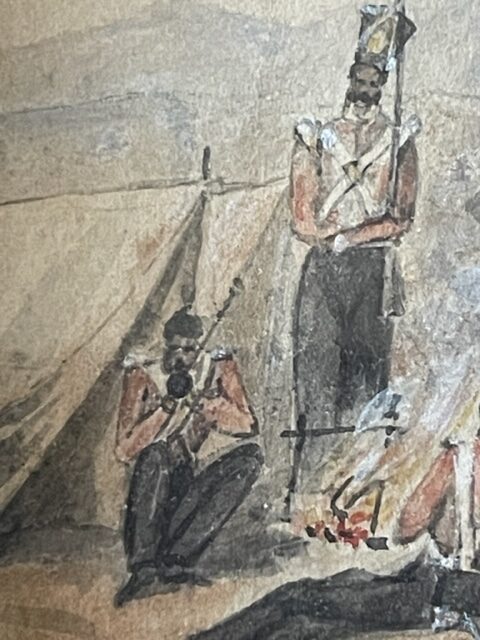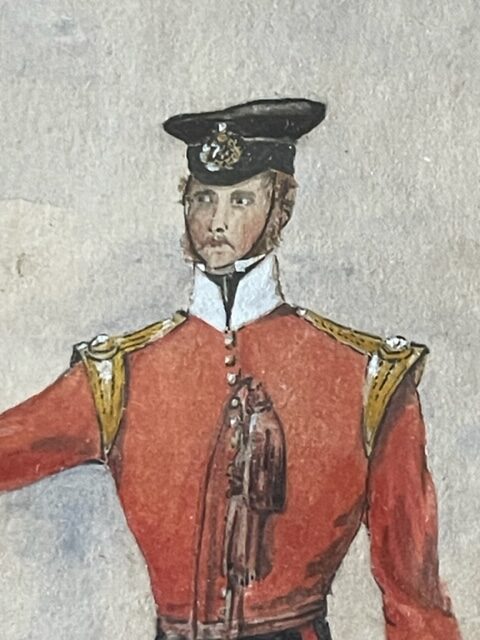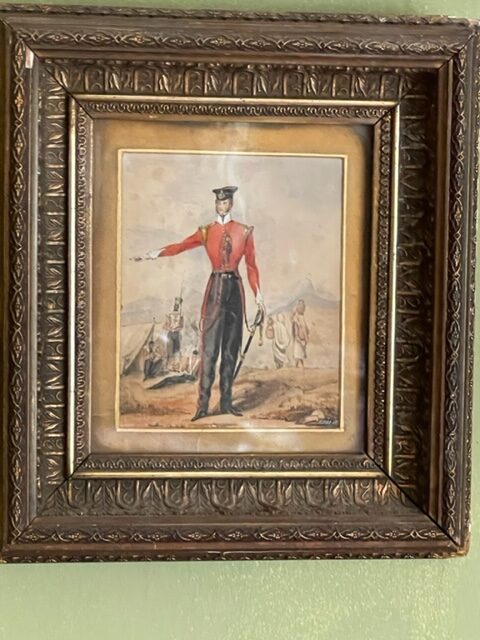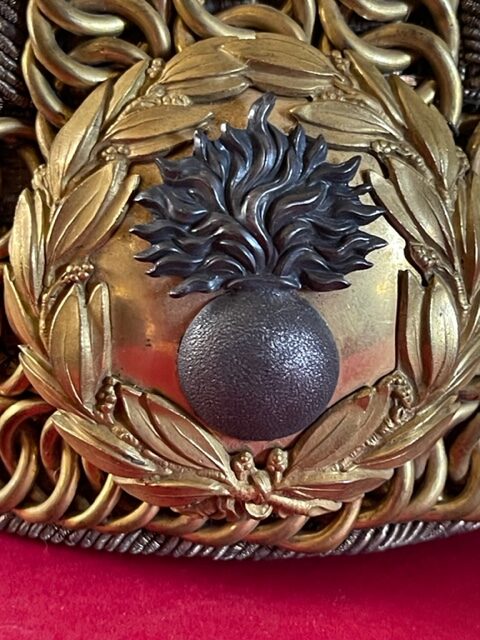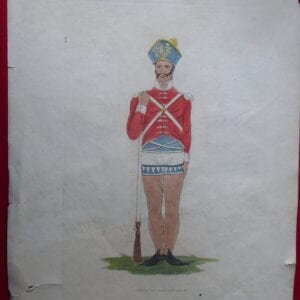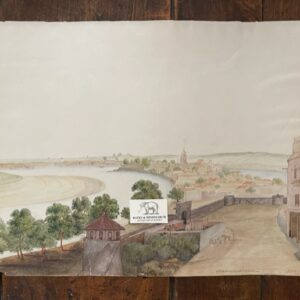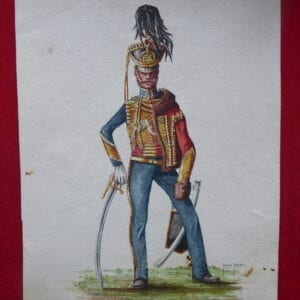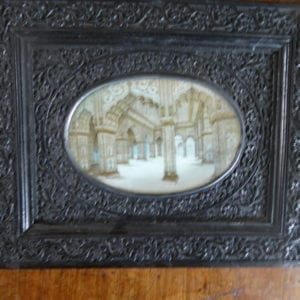74th Bengal Infantry, portrait of an officer circa 1840s. Later to see distinguished service in the Indian Mutiny.
£1,450.00
74th Bengal Native Infantry of the East India Company. A watercolour drawing of an officer, circa 1840s, with particular attention to the details of his uniform. Although the background shows a tented camp with sepoys by a fire and a few servants, the officer is very much the centrepiece of the composution. The portrait, around 5½ x 4½ ins visible, is in a mid 19th century gesso decorated frame and, fascinatingly, contains a manuscript letter from the officer to his daughters. This is on the reverse and also glazed. I have never tried to remove the picture or letter from the frame although I have had the picture for decades. The portrait has initials in white on a black ground bottom right GSM. Although the letter has no visible signature the initials suggest the artist / writer was Captain George Scougall Macbean of the 74th. His letter, reproduced below, showing his pride in his uniform was probably written quite early in his career, which began in 1843. Documentary illustrations like this seldom appear.
For Mary and Hannah. In the undress which is worn for all …. …duties. parades (except inspections when the blue coat, as in the Royal Army, is worn), duties as officer of the day, riding out, dining, etc, etc. We have a full dress as the R.A. worn when required. This dress is only that of a Grenadier officer. The wings on the shoulder are very handsome, made of gilt chain entirely. The wreath on the cap is gold …….around our ….74 in the centre surmounted by a gold Grenade. On each wing is a silver Grenade on a circular raised gold field. As you saw from the sketch [NB This refers to a sketch which we do not have] of the officer not in the Grenadiers, or Light Infantry wear nothing but a little piece of gold cord on the shoulder, and merely a crimson sash round the waist, and the sword stuck into a belt round the waist. The cords and sling belts, and tassels attached to the cords (of crimson silk and fastened on the breast) improve the uniform a great deal and are only worn by the above mentioned officers. The broad scarlet stripe down each leg makes our dress even prettier than the Queen’s. Two of our illustrations show an original example of the distinguishing shoulder wing which is described here. This is one of a pair now (April 2024) for sale elsewhere in the Indian uniform category. How satisfying it would be to re-unite this portrait with his medals. aug23/2
George Scougall Macbean joined the East India Company as a Cadet in 1843 and was commissioned into its latest regiment of native Infantry, the 74th. After the 74th mutinied he remained on the cadre strength but was promoted to the Staff Corps where he served in the Commissary Department. We last noted him in the East India Register 1874 as a Lieutenant Colonel and Assistant Commissaries General in Calcutta. Hart’s Army List 1871 shows him as 1st Class Assistant Commissary General, Kussowlie from 1867 and helpfully records his war services: Lt. Colonel G. S. Macbean served with the force against the Boree Affreedees in 1853 (Medal with Clasp). Accompanied the advance from Allahabad in June 1857 and served with Havelock’s Force from its first taking the field in July, and was present at the actions of Futtehpore, Aoung, Pandoo Nuddee, Cawnpore, Oonao, Busseerutgunj (both actions), Boorbeake-Chowkee, Bithoor, Mundarwar, Alumbaugh, relief of the Garrison of Lucknow, and defence of the Residency; subsequent siege and capture of Lucknow, affairs of Rooyah and Allygunge, Rohilcund campaign, and recapture of Bareilly (mentioned in despatches, thanked by Government, Medals with two Clasps, and Brevet of Major, and a year’s service.
1 in stock
